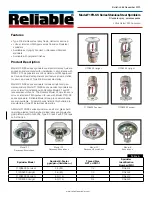
Production Data
WM9090
w
PD, November 2010, Rev 4.1
77
CLASS D SPEAKER CONNECTIONS
The WM9090 incorporates a Class D speaker driver. As the Class D output is a pulse width
modulated (PWM) signal, the choice of speakers and tracking of signals is critical for ensuring good
performance and reducing EMI in this mode.
The efficiency of the speaker drivers is affected by the series resistance between the WM9090 and
the speaker (e.g. PCB track loss and inductor ESR) as shown in Figure 18. This resistance should
be as low as possible to maximise efficiency.
Figure 18 Speaker Connection Losses
The Class D output requires external filtering in order to recreate the audio signal. This may be
implemented using a 2
nd
order LC or 1
st
order RC filter, or else may be achieved by using a
loudspeaker whose internal inductance provides the required filter response. An LC or RC filter
should be used if the loudspeaker characteristics are unknown or unsuitable, or if the length of the
loudspeaker connection is likely to lead to EMI problems.
In applications where it is necessary to provide Class D filter components, a 2
nd
order LC filter is the
recommended solution as it provides more attenuation at higher frequencies and minimises power
dissipated in the filter when compared to a first order RC filter (lower ESR). This maximises both
rejection of unwanted switching frequencies and overall speaker efficiency. A suitable
implementation is illustrated in Figure 19.
Figure 19 Class D Output Filter Components





































